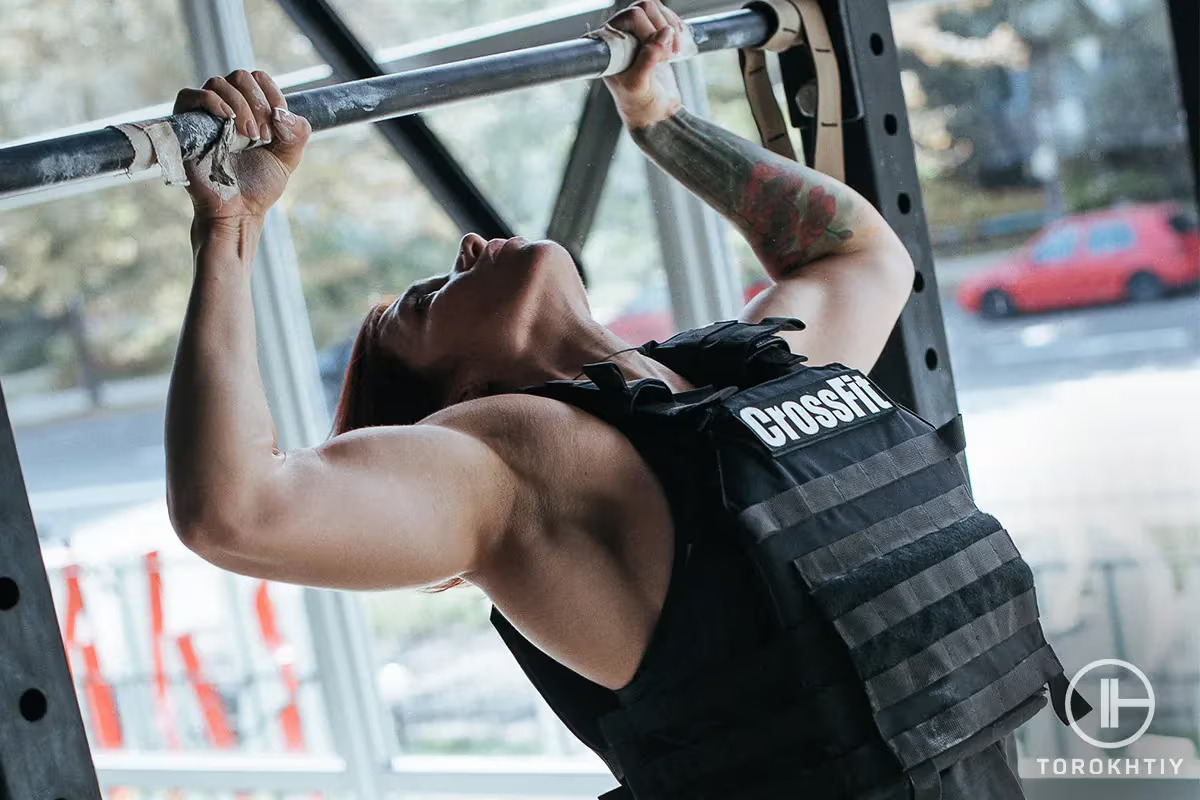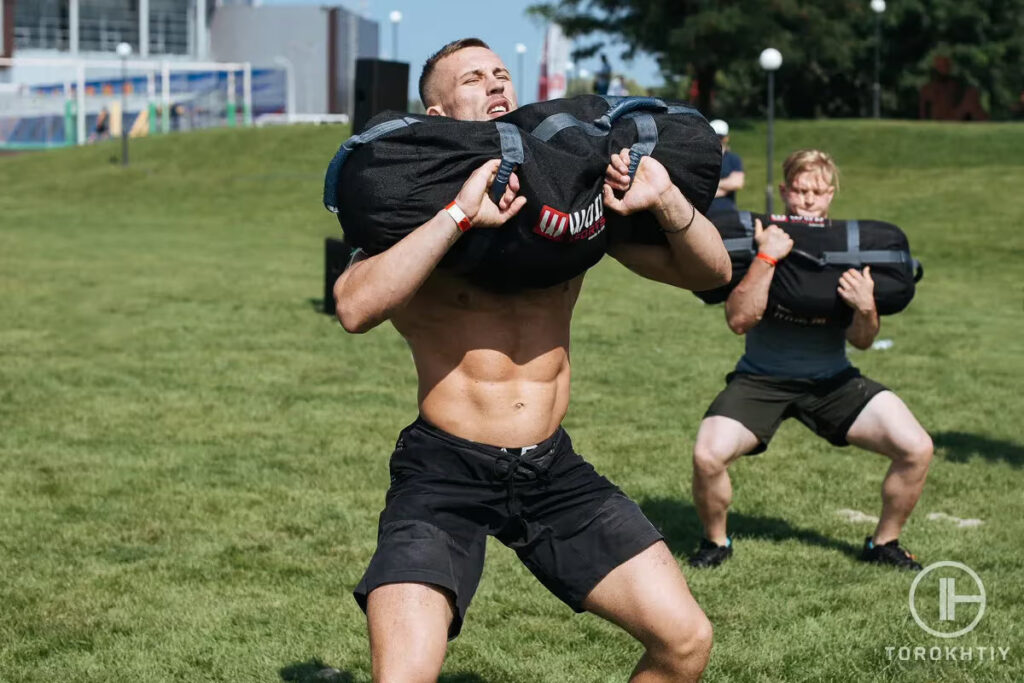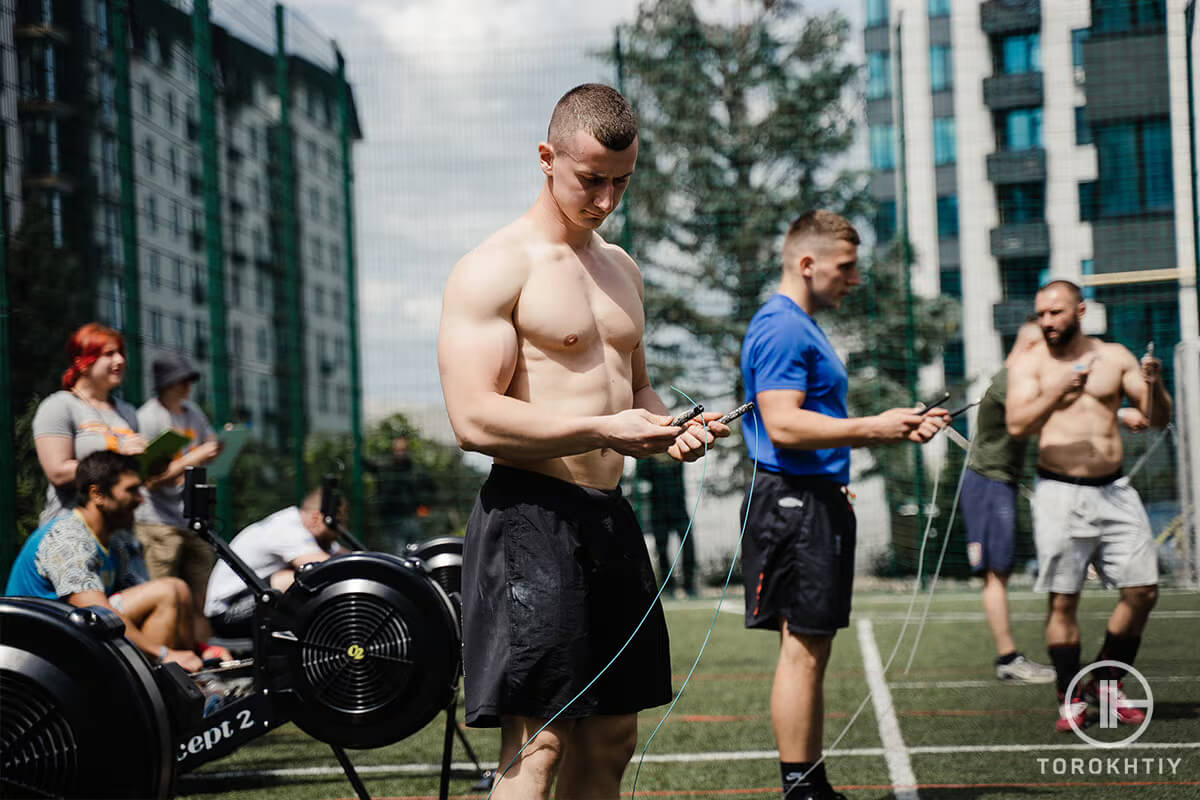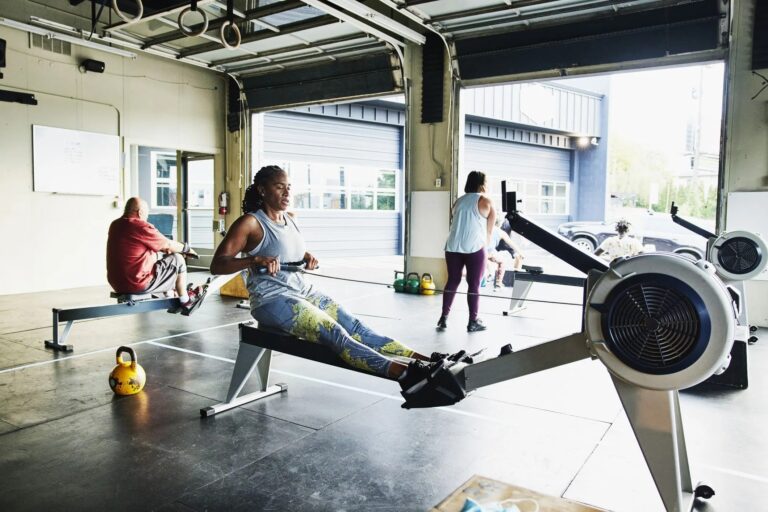Functional Fitness Injuries And How To Avoid Them
Functional fitness is a sport centered on movements conducted out with great intensity and a wide variety. It improves all aspects of motor development, including power, strength, stamina, coordination, flexibility and mobility. Olympic weightlifting, cardio work, gymnastic, functional and interval training are all incorporated into fitness workouts. This article will explore the quantity and distribution of injuries as well as potential injury risk factors that may be present during functional fitness practice.
Functional fitness injuries can occur due to improper form, overtraining, lack of rest, and other factors. To avoid functional fitness injuries, it is important to: start with proper technique, increase intensity and load gradually, get enough rest, and seek professional coaching help.

Is Fitness Dangerous?
The sport of functional fitness is still quite new. Just 20 years have passed since the training method was first developed. Several researches concur that the cause of injuries most frequently impacting the shoulder region and lumbar spine is a high volume of repetitions, high weights, and high intensity.
Like any form of exercise, fitness can be dangerous if proper technique and safety protocols are not followed. However, when performed correctly and under the guidance of a certified fitness trainer, functional fitness can be a safe and effective form of exercise.
The risk of injury in functional fitness can be minimized by starting with proper technique, gradually increasing the intensity and volume of workouts, getting enough rest and recovery time between workouts, listening to your body, warming up and cooling down properly, and seeking professional help as needed.
It’s important to remember that functional fitness workouts are designed to challenge the body and push it to its limits, which means that they can be intense and demanding. However, with proper technique, safety protocols, and guidance from a certified trainer, functional fitness can be a safe and effective way to improve fitness, build strength, and achieve your fitness goals.
The Nature Of functional Fitness Injuries
According to the recent research data of Polish medical scientists (Sebastian Szajkowski, Michał Dwornik, Grzegorz Cieślar) during the training phase, which equated to around 3 ± 1,8 years, almost 48% of participants reported experiencing some sort of injury while doing functional fitness.
Their study included 424 functional fitness athletes (158 women and 266 men, 18-60 years) from 12 clubs in Poland, actively practicing functional fitness.
They discovered a connection between the likelihood of an trauma and:
- gender;
- prior athletic experience before beginning functional fitness;
- isometric protocol warm-up;
- exercising despite the acute pain as an overload result.

• The Gender & Injuries
The amount of 33 % of the study’s male participants were injured while exercising. Yet, only a small percentage (15,3 %) of the women get hurt while doing fitness. The incidence of trauma was shown to be significantly influenced by gender. This is what functional fitness injury statistics says.
• Prior Athletic Experience Before Beginning Functional Fitness
The injury rate seen among athletes decreases with shorter training experience. While the majority of those who didn’t record an injury (16 %) had been exercising for between 0,5 and 1,5 years, those who did report an injury (12 %) had been exercising for between 5 and 10 years.
Sports were previously performed by the great majority of participants (83 %) before beginning functional fitness training. The percentage of individuals who were injured while engaging in fitness within this group was nearly 42 %. The amount of individuals (17 %) who were sedentary before beginning functional fitness had an injury while engaging in it – around 11 %.
• Isometric Warm-Up Protocol
Just 38 % of the functional fitness athletes questioned admitted to warming up using isometric movements. Among that group, a larger percentage (22 %) had no injuries than the fraction (15 %) for whom such injury resulted in a pause in training. The majority (63 %) who skipped the isometric warm-up activities showed the opposite. In that instance, more respondents (33 %) compared to those who didn`t (29 %) claimed to have been injured. Moreover, performing isometric exercises in warm-up significantly reduced the incidence of injuries.
• Exercising Despite The Pain Resulting From The Overload
The majority (22%) of those who exercised while having pain other than DOMS (delayed onset muscle soreness) (38%) had hurt themselves while doing functional fitness. Injury frequency was significantly impacted by the fact that athletes continued to workout despite experiencing concurrent acute discomfort.

In all, 115 participants (out of total 204) reported injuries that had an impact on many body parts during the course of their training (around 3,3 years). 392 injuries in total (1,92 injuries per participant on average) were reported in the study material that was evaluated. 36 of 81 individuals who said they had been injured within the previous year reported having more than 1 injury. Throughout the year, 117 injuries in total (or 1,44 traumas per person) have been reported.
The Most Common Functional Fitness Injuries
During the study, injuries to the shoulder joint and lumbar spine occurred most common functional fitness injuries (about 20% each). The responders identified the hip joint as the injury site with the lowest probability. Find detailed info in the table,
Table 1. Frequency, percentage, and functional fitness injury rate by body parts.
| Body Part | % | Incidence/1000 Training Hours |
|---|---|---|
| Shoulder | 20,51 | 0,73 |
| Lower back/lumbar spine | 19,65 | 0,7 |
| Knee | 12,82 | 0,46 |
| Arm muscles | 10,25 | 0,36 |
| Wrist/hand | 10,25 | 0,36 |
| Ankle/foot | 5,12 | 0,18 |
| Elbow | 5,12 | 0,18 |
| Forearm muscles | 3,41 | 0,12 |
| Thigh muscles | 3,41 | 0,12 |
| Neck/cervical spine | 2,56 | 0,09 |
| Upper back/thoracic spine | 2,56 | 0,09 |
| Shank muscles | 2,56 | 0,09 |
| Hip | 1,7 | 0,06 |
1. Shoulder Injury
There are several types of shoulder injuries that can occur in functional fitness, which can range from mild to severe. Some of the most common types of shoulder injuries in functional fitness include:
- rotator cuff injury;
- shoulder impingement syndrome;
- shoulder instability;
- AC joint separation.
2. Lower Back Injury
Lower back injuries are unfortunately common in functional fitness due to the high-intensity nature of the workouts and the heavy lifting involved. Some of the most common types of lower back injuries in fitness include:
- muscle strain;
- disc herniation;
- facet joint injury;
- sacroiliac joint dysfunction;
- spinal stenosis.
3. Knee Injury
Knee injuries are relatively common in functional fitness due to the high-impact nature of many of the exercises involved. Some of the most common types of knee injuries in functional fitness include:
- patellofemoral pain syndrome;
- meniscus tear;
- anterior cruciate (ACL) and posterior (PCL) ligament tear;
- patellar tendonitis.
15 (7,4%) of the 204 participants in this study who had injuries during functional fitness training required surgery. Surgery was performed on the knee joint in 8 episodes, the lumbar spine in 3, the inguinal hernia in 3, and the Achilles tendon in 1 case. An injury-related layoff from training often lasted more than 2.5 months. This is not an answer to the question: “is fitness bad for your joints ”. It is just a picture of things that are happening.

Tips To Avoid Injuries
Fitness injury rate is in the level of 1,9-3,1/1000 hours of training, which is comparable to other well-known sports like Olympic weightlifting (2,4-3,3/1000 hours), rugby (3-4,2/1000 hours), soccer (4,22/1000 hours), and gymnastics (3,1/1000 hours).
Fitness is a high-intensity workout that can put significant stress on your body, which can increase your risk of injury if proper precautions are not taken. Here are some tips to help you avoid injuries in functional fitness:
1. Start With A Proper Warm-Up
A thorough warm-up that includes dynamic stretching, cardio exercises, and mobility work can help prepare your body for the workout and reduce the risk of injury. Isometric exercises should be a part of a thorough warm-up, according to the research of the Polish science team. The chance of injury is statistically considerably decreased by this part of the warm-up. When muscle tissue exerts continual pressure on blood vessels during isometric activities, there is a momentary reduction in blood flow. As isometric stresses are released, blood vessels expand, boosting the muscles’ blood flow and flexibility.
2. Focus On Proper Form And Technique
Proper form and technique during exercises can help reduce the risk of injury and maximize the benefits of the workout. It’s important to work with a qualified coach to ensure that you are using proper form during exercises.
3. Listen To Your Body
If you experience pain or discomfort during an exercise, stop immediately and seek advice from a coach or healthcare professional. Pushing through pain can worsen an injury and prolong recovery time. Exercise performance without accompanied pain symptoms is another statistically important factor in injury prevention. Training while experiencing co-occurring or coexisting pain sensations invariably aggravates the initial injury since pain is always an indication of tissue damage.

Pain may and should happen during the training process, for instance, DOSS & DOMS. Depending on the level of training, the DOSS & DOMS symptoms need to go away between 36 to 72 hours. It is important to educate trainers on the many forms of pain. Athletes must be able to distinguish between “soreness” and severe pain, which serves as the foundation for stopping exercise and frequently also for starting therapy.
4. Progress Gradually
Don’t try to lift heavy weights or perform advanced exercises before you are ready. Gradually increase weight and intensity to avoid overexertion and injury.
5. Incorporate Rest And Recovery Into Your Routine
Rest days and recovery exercises like stretching, foam rolling, and massage can help prevent injuries and promote recovery.
6. Wear Appropriate Gear
Wearing proper athletic shoes, supportive clothing, and protective gear like wrist wraps or knee sleeves can help reduce the risk of injury during functional fitness workouts.
7. Stay Hydrated And Fueled
Proper hydration and nutrition are essential for maintaining energy levels and preventing fatigue and injuries during workouts.
FAQ
Do Fitness Athletes Get Injured More?
Like any physical activity that involves high intensity and a variety of movements, there is a risk of injury. However, it’s difficult to say whether functional fitness athletes get injured more than participants in other fitness programs. Good coaching, appropriate scaling of exercises, and adequate recovery time can all help reduce the risk of injury in fitness and any other fitness program.
Is Functional Fitness Healthier Than Gym?
Both functional fitness and traditional gym workouts can be healthy and effective for improving fitness, strength, and overall health. Ultimately, whether fitness or a traditional gym workout is healthier depends on an individual’s specific fitness goals, preferences, and the quality of instruction and coaching available. Both options can provide a healthy and effective way to improve fitness and overall health, as long as proper form and technique are followed, and injury prevention is a priority.
What Is The Most Common Injury In Functional Fitness?
The most common injury in fitness appears to be shoulder injuries, particularly rotator cuff injuries. Other common injuries in fitness include lower back injuries, knee injuries, and wrist injuries. These injuries can occur due to the high-intensity nature of functional fitness workouts, which often involve a variety of exercises and movements that place stress on the body.
Conclusion
To avoid injuries in functional fitness, it is important to use proper technique and form, gradually increase workout intensity, and work with a qualified coach who can provide guidance and ensure proper form. It is also important to prioritize injury prevention, listen to your body, and rest and recover as needed. By following these precautions and taking a cautious approach to functional fitness workouts, individuals can minimize the risk of injury and safely enjoy the benefits of this popular fitness program. Now your turn to ask questions or comment below.
Why Trust Us?
With over 20 years in Olympic Weightlifting, our team does its best to provide the audience with ultimate support and meet the needs and requirements of advanced athletes and professional lifters, as well as people who strive to open new opportunities and develop their physical capabilities with us.
By trusting the recommendations of our certified experts in coaching, nutrition, dietology, and sports training programming, as well as scientific consultants, and physiotherapists, we provide you with thorough, well-considered, and scientifically proven content. All the information given in the articles concerning workout programming, separate exercises, and athletic performance, in general, is based on verified data. We ensure that you can rely on our professionals’ pieces of advice and recommendations that can be treated as personalized ones which will benefit you and fully meet your needs.
The product testing process is described in more detail here
Author: Sergii Putsov
Head of Sport Science, PhD
Best Results: Snatch – 165 kg,
C&J – 200 kg
Sergii Putsov, Ph.D., is a former professional weightlifter and National team member, achieving multiple medals in the 94 kg weight category at national competitions. With a Master’s degree in “Olympic & Professional Sport Training” and a Sport Science Ph.D. from the International Olympic Academy, Greece, Sergii now leads as the Head of Sport Science. He specializes in designing training programs, writing insightful blog articles, providing live commentary at international weightlifting events, and conducting educational seminars worldwide alongside Olympic weightlifting expert Oleksiy Torokhtiy.







